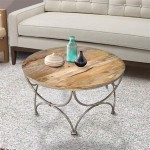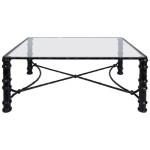Standard Dining Table Dimensions: Height, Width, and Length
The selection of a dining table is a significant decision in furnishing a home. A dining table serves not only as a place for meals but also as a focal point for social gatherings, family discussions, and even work. Therefore, understanding standard dining table dimensions, particularly height, is crucial to ensuring comfort, functionality, and aesthetic harmony within the dining space. This article explores the standard dimensions of dining tables, focusing specifically on height, and considers the factors influencing these measurements.
Standard Dining Table Height
The standard height for a dining table, measured from the floor to the top of the table surface, typically falls within the range of 28 to 30 inches (71 to 76 centimeters). This height is considered optimal for accommodating individuals of average height and allowing comfortable legroom. The 2" inch grace on the height is also to ensure that the table aligns with the standard height of the dining chairs too. Adherence to this standard promotes proper posture during meals, reducing strain on the back and neck.
This standard height allows for the use of standard-sized dining chairs, which typically have a seat height of 18 to 20 inches. The difference between the table height and the chair seat height, often referred to as "knee space," is approximately 8 to 12 inches. This knee space provides adequate room for legs and allows individuals to sit comfortably without feeling cramped. Deviating significantly from this standard can lead to discomfort and an awkward dining experience.
Variations in dining table height do exist, although they are less common. Counter-height tables, which stand taller at around 34 to 36 inches, and bar-height tables, reaching 40 to 42 inches, are designed for use with corresponding counter stools and bar stools, respectively. These taller tables are often found in more casual dining settings or kitchens with island seating. However, for a traditional dining room, the standard height of 28 to 30 inches remains the most prevalent and ergonomically sound choice.
The standard table height has evolved over time, influenced by anthropological studies of human body proportions and ergonomic considerations. Furniture designers and manufacturers have refined these measurements to cater to the majority of the population, ensuring a comfortable and functional dining experience. While custom-made tables can be tailored to specific needs, the standard height provides a reliable benchmark for selecting a dining table that will suit most users.
When selecting a dining table, it's important to consider the thickness of the tabletop. A thicker tabletop might reduce the available knee space slightly, potentially impacting comfort. Likewise, the style of the table legs or base can also affect the overall height and accessibility of the table. Tables with ornate or bulky legs might further reduce legroom, requiring careful consideration of chair selection.
Factors Influencing Dining Table Width and Length
While height is a critical dimension, the width and length of a dining table are equally important in determining its suitability for a particular space and the number of people it can comfortably accommodate. These dimensions are influenced by several factors, including the size of the dining room, the desired seating capacity, and the overall aesthetic of the space.
Dining table width typically ranges from 36 to 48 inches (91 to 122 centimeters). A width of at least 36 inches is recommended to allow sufficient space for place settings on either side of the table and for serving dishes in the center. A wider table, up to 48 inches, provides even more room and is particularly useful for larger gatherings or for displaying elaborate table settings.
The length of a dining table is directly related to the number of people it can seat. A general guideline is to allocate approximately 24 inches of linear space per person. Therefore, a table that is 48 inches long can comfortably seat four people (two on each side), while a table that is 72 inches long can seat six. Round tables offer a slightly different dynamic, with the diameter determining seating capacity. A round table with a diameter of 48 inches can typically seat four people, while a 60-inch diameter can seat six to eight.
The shape of the table also plays a role in determining its optimal dimensions. Rectangular tables are well-suited for long, narrow dining rooms, while square tables work well in smaller, more intimate spaces. Oval tables offer a compromise between the two, providing a softer, more organic shape while still accommodating a reasonable number of people. Extending tables, which can be expanded with leaves, offer versatility for accommodating larger groups when needed, making them a practical choice for those who frequently entertain.
The size of the dining room itself is a primary constraint on the dimensions of the dining table. It's essential to leave sufficient clearance around the table for comfortable movement and access to chairs. A minimum of 36 inches of space between the edge of the table and the surrounding walls or furniture is generally recommended. This allows people to move freely around the table without bumping into obstacles. In smaller dining rooms, space-saving solutions such as drop-leaf tables or corner banquettes may be necessary to maximize functionality.
Beyond functionality, the aesthetics of the dining table should also be considered. The table should be proportionate to the size of the room and complement the overall style of the décor. A large, imposing table in a small room can feel overwhelming, while a small, delicate table in a large room might appear insignificant. Balancing the size and style of the table with the surrounding environment is crucial for creating a harmonious and visually appealing dining space.
Ergonomic Considerations for Dining Comfort
Beyond adhering to standard dimensions, ergonomic considerations play a vital role in ensuring dining comfort. Ergonomics focuses on designing furniture and spaces that are optimized for human use, promoting good posture and reducing strain on the body. When selecting a dining table and chairs, it's important to consider factors such as seat height, back support, and legroom to create a comfortable and supportive dining environment.
As previously mentioned, the seat height of the dining chairs should be approximately 10 to 12 inches lower than the table height. This allows for adequate knee space and ensures that individuals can sit comfortably without hunching over or feeling cramped. Chairs with adjustable height mechanisms can be particularly useful for accommodating individuals of varying heights.
Back support is another crucial factor in dining comfort. Chairs with contoured backs that provide lumbar support can help maintain good posture and reduce strain on the lower back. Upholstered chairs with padded seats and backs offer additional comfort, especially for extended periods of sitting. The angle of the chair back should also be considered, as a slight recline can help promote relaxation.
The material and finish of the dining table and chairs can also impact comfort. Smooth, non-abrasive surfaces are preferred to prevent irritation or discomfort. Table edges should be rounded or beveled to avoid sharp corners that can dig into the arms or thighs. The finish should be durable and easy to clean, ensuring long-lasting beauty and functionality.
The arrangement of the dining space can also contribute to ergonomic comfort. Adequate lighting is essential for creating a pleasant dining environment and reducing eye strain. Proper ventilation can help maintain a comfortable temperature and prevent stuffiness. The placement of the table in relation to windows and other sources of natural light should also be considered to minimize glare and shadows.
In addition to the table and chairs, accessories such as tablecloths, placemats, and napkins can also enhance dining comfort. Tablecloths can provide a soft, cushioned surface, while placemats can protect the table from spills and scratches. Cloth napkins are more absorbent and comfortable to use than paper napkins.
Ultimately, the goal of ergonomic design is to create a dining space that is both functional and comfortable. By considering factors such as table height, chair dimensions, back support, and lighting, it is possible to create a dining environment that promotes good posture, reduces strain, and enhances the overall dining experience.

What Is The Ideal Dining Table And Chair Height
Optimal Sizes For The Dining Room Kitchen Furniture Urban Quarter

Dining Table Dimensions The Complete Guide Homenish

Dining Table Height Chair

What Are Standard Table Heights
.jpg?strip=all)
How To Choose A Dining Table Height Size Guide

What Is The Ideal Dining Table And Chair Height

How To Pick A Table Guide Including Dimensions

How To Pick The Right Dining Chair Height Inside

Seat Height Table
Related Posts








